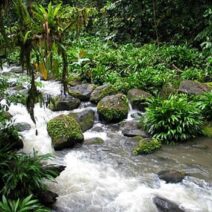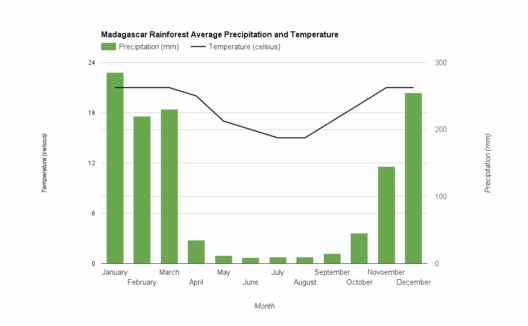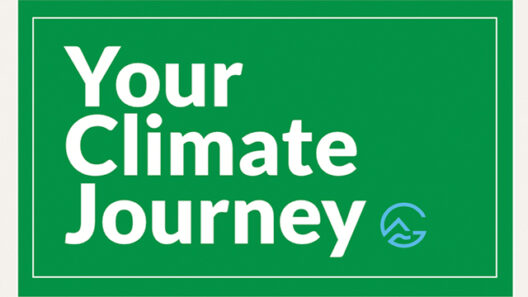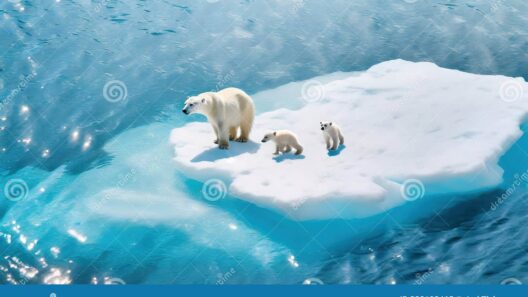Desert ecosystems, characterized by arid climates and specialized flora and fauna, are increasingly confronted with the ramifications of global warming. The rise in average temperatures, alongside altered precipitation patterns, threatens the delicate balance that sustains these unique habitats. As habitats deteriorate, the indigenous species, including the human populations often dubbed “Desert Dwellers,” face profound challenges. This treatise will explore the multifarious impacts of climate change on desert ecosystems, the strategies for adaptation, and the intrinsic value of fostering resilience in these environments.
The phenomenon of global warming engenders an array of challenges distinctive to desert regions. Firstly, rising temperatures lead to augmented evaporation rates, compounding the scarcity of water. This hydric stress precipitates both immediate and long-term ramifications for desert flora, which rely on minimal yet crucial rainfall. Disruption of natural water cycles can induce shifts in land use patterns as agricultural practices struggle to sustain crop yields in the face of lengthening dry spells. Consequently, food security becomes precarious for both wildlife and human inhabitants, amplifying reliance on external resources.
In conjunction with water scarcity, the encroachment of desertification represents an escalating threat. Desertification is defined as the process through which fertile land becomes increasingly arid due to various factors, primarily climatic shifts and human activity. With the increasing incidence of extreme weather events, including intense droughts and flash floods, soils become vulnerable to erosion. The integrity of these ecosystems is further undermined, with repercussions for species that depend on stable habitats. For instance, the loss of ground cover can disrupt the lifecycle of native insects, which, in turn, affects bird populations and larger mammals that rely on these species for sustenance.
The ramifications extend beyond natural ecosystems, as the human factor plays an integral role in adapting to these challenges. Indigenous populations, often attuned to the rhythms of their environmental settings, possess ancestral knowledge that can be pivotal in navigating these changes. Ground-level adaptation strategies include the development of sustainable water management practices, such as rainwater harvesting systems and the re-introduction of traditional agricultural techniques like permaculture, which emphasize soil conservation and biodiversity.
Moreover, technological innovation can serve as an ally in addressing the adverse impacts of global warming. The incorporation of renewable energy sources, such as solar and wind power, can mitigate reliance on fossil fuels that exacerbate climate change. For desert regions where sunlight is abundant, solar energy presents an opportunity for both energy independence and economic resilience. By harnessing these sources, desert dwellers can reduce their carbon footprint while ensuring a reliable energy supply for irrigation and domestic use.
Another area requiring attention is wildlife conservation. As habitats shift, migration patterns of various species may alter, necessitating the establishment of wildlife corridors that ensure species can traverse between increasingly fragmented habitats. Initiatives focusing on the protection of endangered species native to desert ecosystems, such as the desert tortoise and various unique reptiles, are essential for maintaining biodiversity. Conservation efforts must encompass both species protection and habitat restoration, ultimately fostering ecosystems that can endure and recover from climatic disturbances.
Education and community involvement are critical components in this adaptive process. Awareness campaigns aimed at highlighting the interconnectedness of climate change and local environments can galvanize community action. Workshops that teach sustainable practices can empower individuals, transforming passive observers into active stakeholders. This community-centric approach fosters a collective resilience that can serve as a bulwark against the existential threats posed by climate change.
Furthermore, policy frameworks must evolve to reflect the realities of a warming world. Governments and organizations must prioritize climate adaptation measures in their strategic planning to ensure that funding and resources are allocated to the most vulnerable communities. Integrative policies that engage all stakeholders, from local communities to international agencies, are essential for cultivating a robust response to the dire effects of climate change in desert regions. Such policies should address land use, resource management, and emergency preparedness, promoting a comprehensive approach to resilience.
However, one must acknowledge that adaptation does not equate to a wholesale relinquishing of environmental conservation. Rather, the two should operate in tandem, fostering a symbiotic relationship that promotes sustainable practices while respecting the intrinsic value of desert ecosystems. By embracing both adaptation strategies and conservation efforts, one can work toward a future where humans and ecological systems coalesce harmoniously, irrespective of the climatic challenges precipitated by global warming.
In conclusion, the plight of desert dwellers in an increasingly warming world underscores the pressing need for multifaceted approaches to adaptation. The confluence of climatic changes, the socioeconomic dynamics of human populations, and the imperative of preserving biodiversity necessitate a collective response that marries innovation with tradition. By understanding the intricate relationships within these ecosystems and leveraging shared knowledge, communities can foster resilience, ensuring that the arid landscapes not only survive but thrive amid changing climatic conditions. The future of desert dwellers—and indeed, the broader planetary ecosystem—hinges on the actions taken today to confront the existential threat of climate change head-on.








